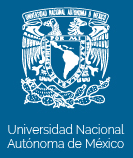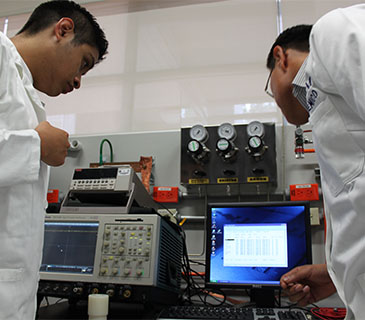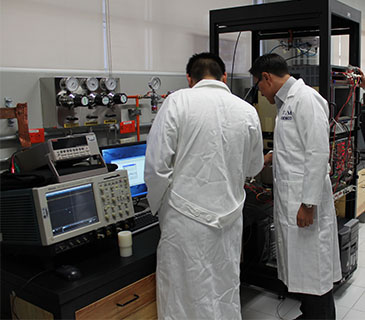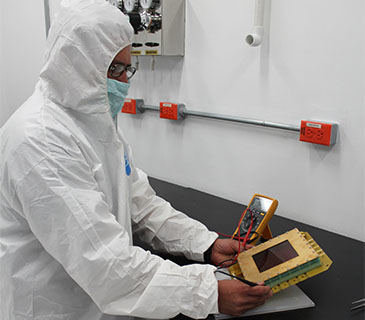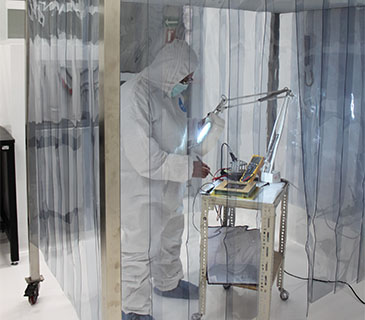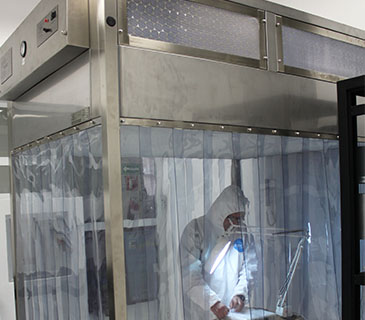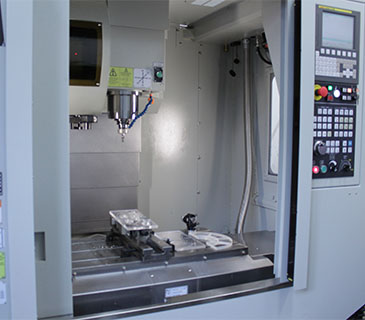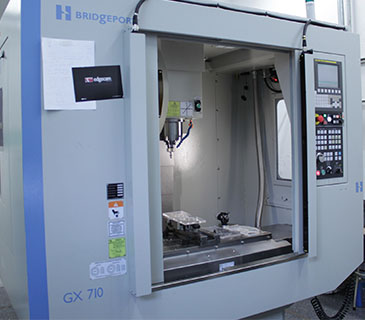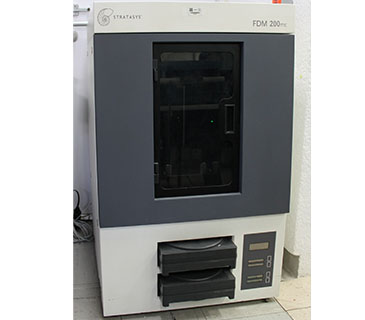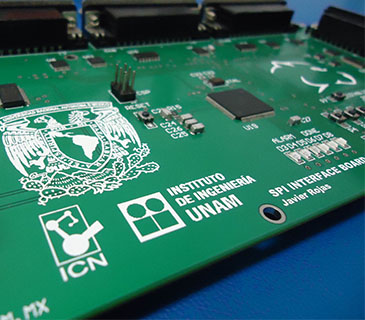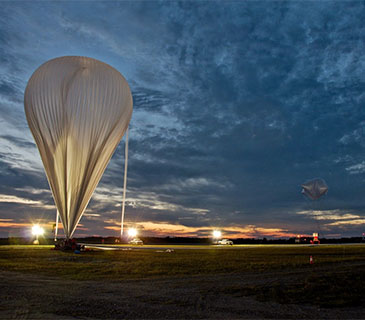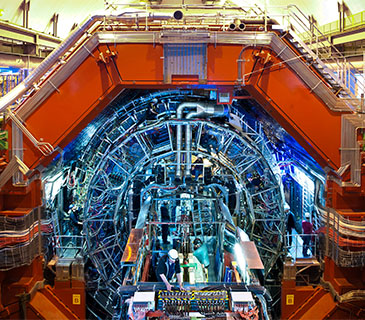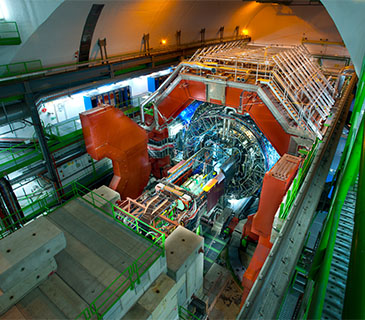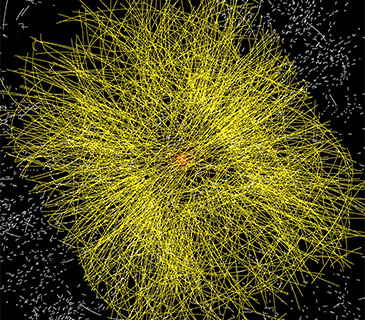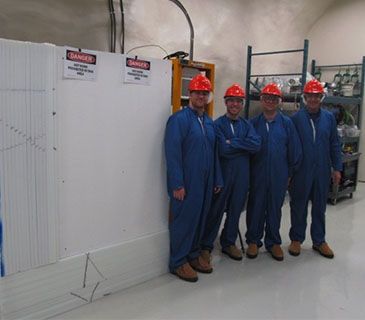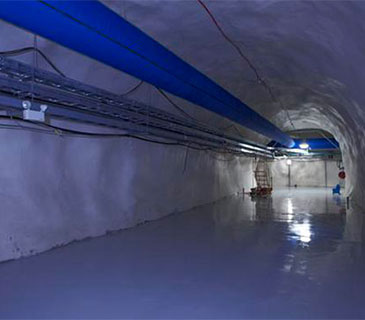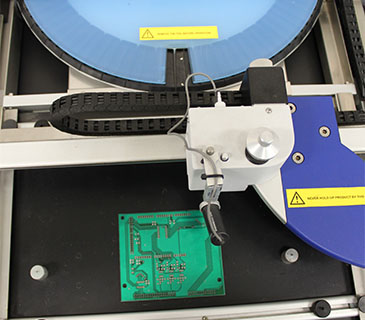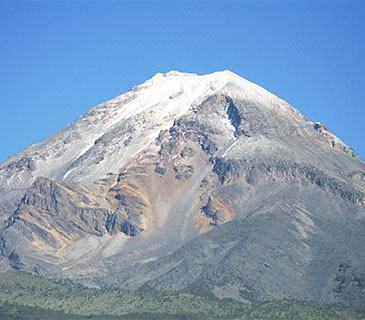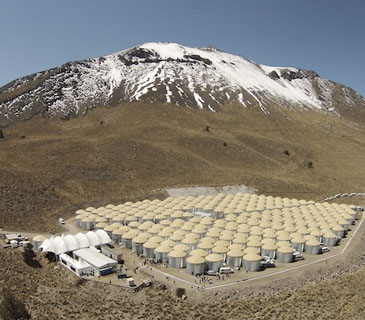- Collaboration with the LHC’s Alice experiment, which aims to study matter in extreme high-temperature and high-density conditions through heavy-ion collisions. For the LHC’s run 3, luminosity in heavy-ion collisions will considerably increase (a number of collisions per second of ~50 kHz) with the intention of increasing the statistic of QGP’s (Quark-Gluon Plasma) rare tests. To make the most out of the scientific potential in these conditions, ALICE will improve its detectors. In the main tracking detector and hadron identification, TPC (Time-Projection Chamber), the current MWPC (Multi-Wire Proportional Chamber) will be replaced by GEM (Gas-Electron Multiplier) detectors. Together with BUAP (Meritorious Autonomous University of Puebla) researchers, the Detector Laboratory develops a current meter for the GEM detectors that will be used in the said upgrade.
- Together with professors from the National Preparatory School, we are developing a cosmic ray detection kit for teaching high-energy physics at an upper-secondary level.
- Collaboration with the DAMIC experiments in the underground laboratory SNOLAB, in Canada, and CONNIE, in the Angra Nuclear Power Plant, in Brazil. Both use detectors based on CCD devices of scientific quality which are operated at high vacuum at temperatures of around ~140 Kelvin in an environment low in radioactive contaminants. DAMIC uses this detection technology to carry out a search of light dark matter (masses of 1-10 GeV/c2), while CONNIE’s objective is to detect the process of coherent elastic scattering of neutrinos with nucleus (DECNN) using a nuclear reactor’s antineutrinos. Something crucial for the use of CDD as particle detectors is to understand their response to different types of radiation (alpha, beta, gamma, and neutron). An assembly is currently being installed at the Detector Laboratory to carry out CCD samples and characterizations. There’s also a high-purity germanium detector (HPGE) that will be used to carry out measurements of the level of radioactive contaminants in materials used for the detector.
- We are working on the development of a prototype of a detector for antineutrinos produced by nuclear reactors. The detector consists of a segmented volume of plastic scintillators wrapped in gadolinium sheets, coupled with photomultiplier tubes.
- Group of Space Instrumentation: The Group of Space Instrumentation is dedicated to the development of scientific instrumentation, both stratospheric and orbital. The projects currently in development are:
Detector Laboratory
Head of the laboratory: Dr. Guy Paic
guypaic@nucleares.unam.mx
Member:
Researchers: Dr. Guy Paic, Dr. Alexis Aguilar Arévalo,
Dr. Gustavo Medina Tanco, Dr. Juan Carlos D'Olivo,
Dr. Antonio Ortiz Velásquez
Technicians: M.Sc. Miguel Enrique Patiño Salazar,
M.Sc. Juan Carlos Sánchez Balanzar
Contact:
Miguel Enrique Patiño Salazar
miguel.patino@nucleares.unam.mx
Phone: +(52) (55) 5622 4660/61/62
Ext: 5528
Projects in Development
Balloons/Suborbital space flights
- Pixqui v.2 (ICN-AEM-NASA): stratospheric flight platform in NASA balloons with payloads of up to 50 kg.
- PSubM3 (ICN-AEM): national stratospheric platform for scientific and technological use.
- 2nd EUSO-Balloon flight (CNES): preparation of the second flight of the EUSO-Balloon telescope together with the National Centre for Space Studies (France) from Vizcaya in 2016.
- 3rd EUSO-Balloon flight (NASA): modification of the EUSO-Balloon instrument for circumterrestrial flight from New Zealand with NASA in 2017.
- SASUE (Support System for Urban Emergency Services) (ICN): system of support for emergency services in the case of catastrophes based on a combination of drones and small instrumented balloons.
- Satellite Telemetry and Telecommand System (ICN-AEM-CNES): development of a telecommunications system based on mobile phone networks to be used by small satellites as part of an AEM-CNES-ICN agreement.
Space
- Mini-EUSP (ROSCOSMOS-ASI): UV camera to be used from inside the space station operated manually by an astronaut. It aims to observe cosmic-ray air showers from space and to detect and determine the orbits of space debris.
- K-EUSO (ROSCOSMOS-JAXA): reflector/refractor telescope to be installed in the outside of the ISS, meant for detecting cosmic rays of ultra-high energy.
- ALACTIC I, II and III (AEM-ICN): series of CubeSats to be launched by the company Interorbital from California in November of 2015 and March of 2016.
- Metztli/Tepitzin: proposal of mission to the moon’s surface as a proof that microrobots self-organized in swarms can build structures.
- FemtoSat (ICN-INAOE-IPN…): small satellite with a mass of under 100 g.
Earth
- TA-EUSO (EUSO Collab. + TA Collab): UV telescope, JEM-EUSO Prototype within the Telescope Array Observatory in Utah.
- BATATA (Pierre Auger Collab): detector meant for punch-through characterization installed in the Pierre Auger Observatory in Argentina.
- Thermal vacuum chamber update (ICN): design and implementation of a heat exchanger based in nitrogen for the thermal vacuum chamber used in space qualification tests.
- National stratospheric cargo launch site (ICN, AEM, and CITNOVA-Gob. de Hidalgo).
Advanced Manufacturing Area
Teaching
Each semester, we offer the contemporary physics laboratory (rotation model) of the Undergraduate Program in Physics at the UNAM’s School of Science. The practice consists of measuring cosmic rays using scintillator paddles and GEM detectors.
Every semester, we offer the Advanced Experimental Physics Laboratory course of the Postgraduate Program in Physics.
The Detector Laboratory currently works with and accepts students from several UNAM facilities.
Infrastructure
UNAM COMMUNITY
- Office for the Defense of University Rights
- UNAM Emergency: 56160914 ó 56220140
- PUMA Reaction: 56226464 ext 26464
